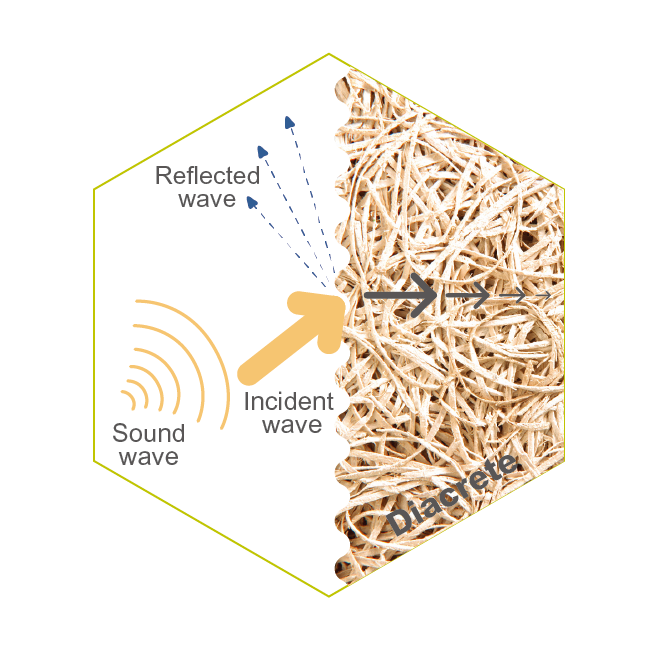
When sound hits the rough, filled wood wool texture surface of Diacrete boards, the sound wave will happen in these two situations:
- Most parts of waves will be transmitted into the Diacrete panel, with the energy of the incident wave being spent in its friction with wood wools.
- Very few parts of waves will be reflected and then redirected back into the room.
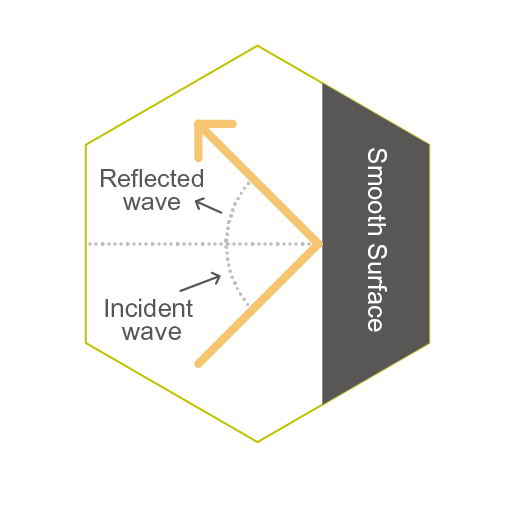
1. Reflection
Description: When the surface of the ceilings and walls in a room are smooth, the angles of incident sound wave will almost equal the angle of reflected waves. In this case, echoes will be all over the room and voice will be difficult to hear clearly.
Possible scenario: When a space is echoey, it is difficult to have a proper conversation. People can get edgy or even agitated as a result of the reverberation.
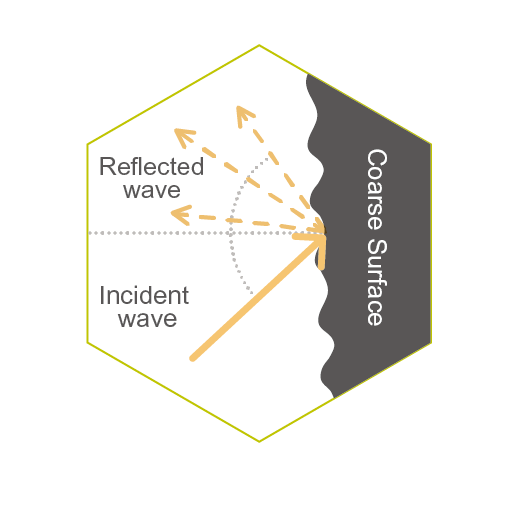
2. Diffusion
Description: When sound is reflected off a rough, uneven surface, the reflected sound will be scattered and the angle of incidence will not equal the angle of reflection. This redirection of the incident sound wave is called diffusion.
Possible scenario: Diffusion can be prevented by the use of porous or coarse surfaces, which can absorb or dampen the sound. For instance, as the Diacrete wood wool board is rough in its surface, the material will scatter and absorb sound, thereby effectively reducing echoes and enhancing the clarity of voice.
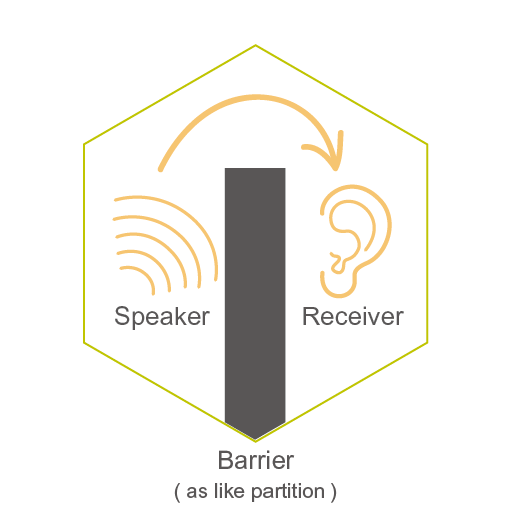
3. Diffraction
Description: Sound waves can travel through small openings.It is highly likely for sound to pass through barriers or glass partitions that do not reach the ceiling. In that case, the sound might get louder as it spreads out beyond the gap.
Possible scenario: When diffraction occurs, it is commonplace for sound to build up beyond the opening. This usually happens where partitions do not reach the ceiling, which can cause disturbances as the magnified sound being heard in the neighboring room.

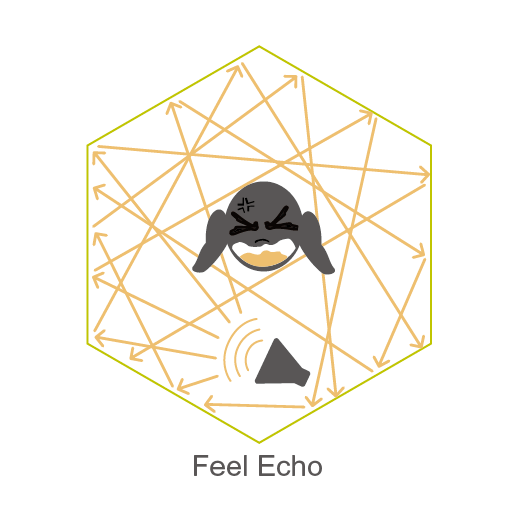
4. Reverberation
Description: Strong echoes can pose a serious problem in stadiums and auditoriums. They can disrupt speeches and make it difficult to hear clearly.
Possible scenario: The audience might get distracted, less focused, or even irritated, in a space with reverberation, over a long period of time.







